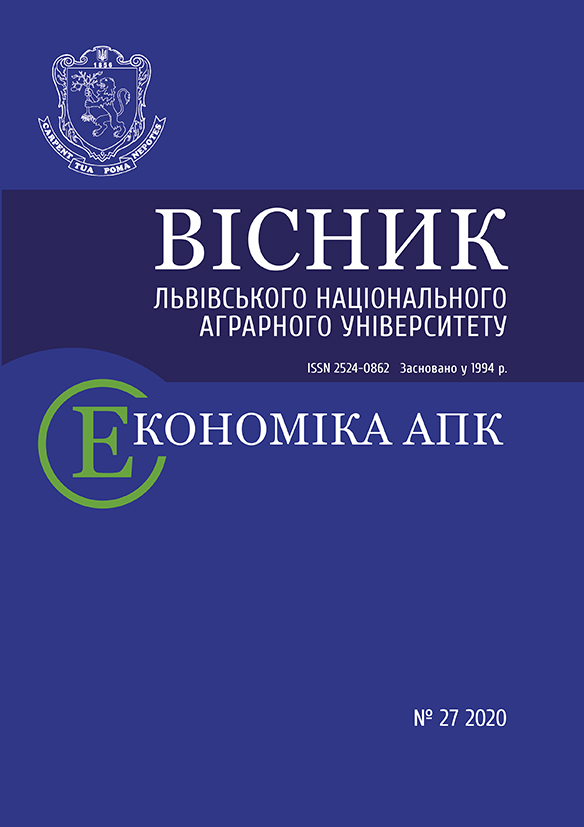Visnyk LNAU: Agronomy 2020 №24: 135-140
Preliminary results of the study of white clover breeding material on the Pre-Carpathian area
O. Perehrym, Candidate of Agricultural Sciences
ORCID ID: 0000-0002-6018-1128
Institute of Agriculture of the Carpathian region of the NAAS
https://doi.org/10.31734/agronomy2020.01.135
Annotation
Introduction of highly productive varieties of clover with high rates of green mass, dry matter, seed and product quality in the production is one of the most important ways to increase the efficiency of its sowing. Therefore, breeding is of great importance.
The article presents results of breeding work on white clover under the soil and climatic conditions of the Pre-Carpathian area. The research argues the importance of that plant, as one of the most important pasture perennial legumes. The study was conducted during 2018–2019. In the collection nursery, 30 numbers were studied. The main task was to select the best numbers for their further use in plant breeding work in order to create new varieties of white clover, being adopted to the conditions of the region of cultivation. The phenological observations demonstrated that duration of the vegetative period of the studied samples of white clover made 127–136 days from the phase of the beginning of spring regrowth to the full ripeness of seed. The collection samples were divided into three groups of ripeness: early ripening, medium ripening and late ripening. To make complete characteristics of the samples and increase the efficiency of selection, the researcher determined the parameters of the structure of seed yield, particularly, the length of flower head, the diameter of inflorescence (head), the number of flowers in the head, the number of seeds in the head, weight of 1000 seeds, weight of seeds from one plant. The highest seed yield was produced by № 1139 – 0.138 t/ha, № 356 – 0.136 t/ha, № 5 – 0.135 t/ha, № 924 – 0.134 t/ha, № 796 – 0.130 t/ha, № 1081 – 0.132 t/ha, № 1076 – 0.133 t/ha referring to the average seed yield of the standard 0.116 t/ha. Breeding work on the samples with best economic and valuable features will be carried out in the future.
Key words
white clover, breeding, breeding number, variety, collection nursery, vegetative period, seed yield
Link
- Babych A. O. Fodder and protein resources of the world. Kyiv, 1995. 298 p.
- Babych A. O. Methodology of conducting experiments on fodder production and animal feeding. Kyiv, 1998. 80 p.
- Dziubailo A. H., Zaviriukha P. D. Bean forage crops: Lviv, 2004. 220 p.
- Methodical instructions for breeding of perennial grasses / P. A. Voshchinin and others. Moscow, 1978. 130 p.
- Methodical instructions for the study of the world collection of perennial fodder grasses / P. A. Lubenets and others. Moscow, 1971. 24 p.
- Molotov A. S. Methodology of field experiment. Moscow, 1966. 237 p.
- Sobko M. G., Sobko N. A., Sobko O. M. The role of perennial legumes for improvement of soil fertility. Feed and fodder production. 2012. Issue 74. P. 53–57.
- Zinchenko B. S. Perennial grasses in intensive fodder production. Kyiv: Harvest, 1991. 192 p.



